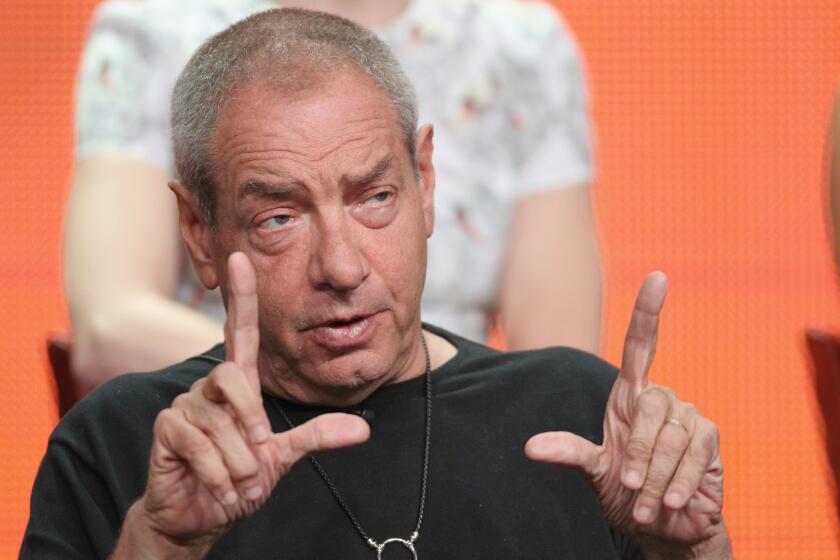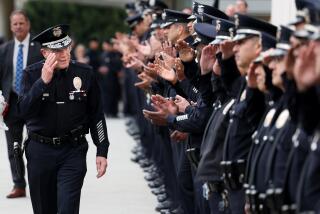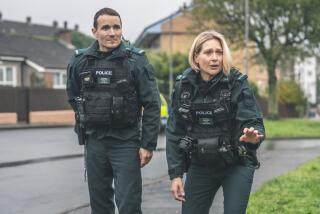CBS tried to reform the cop show. Police reform advocates are not impressed
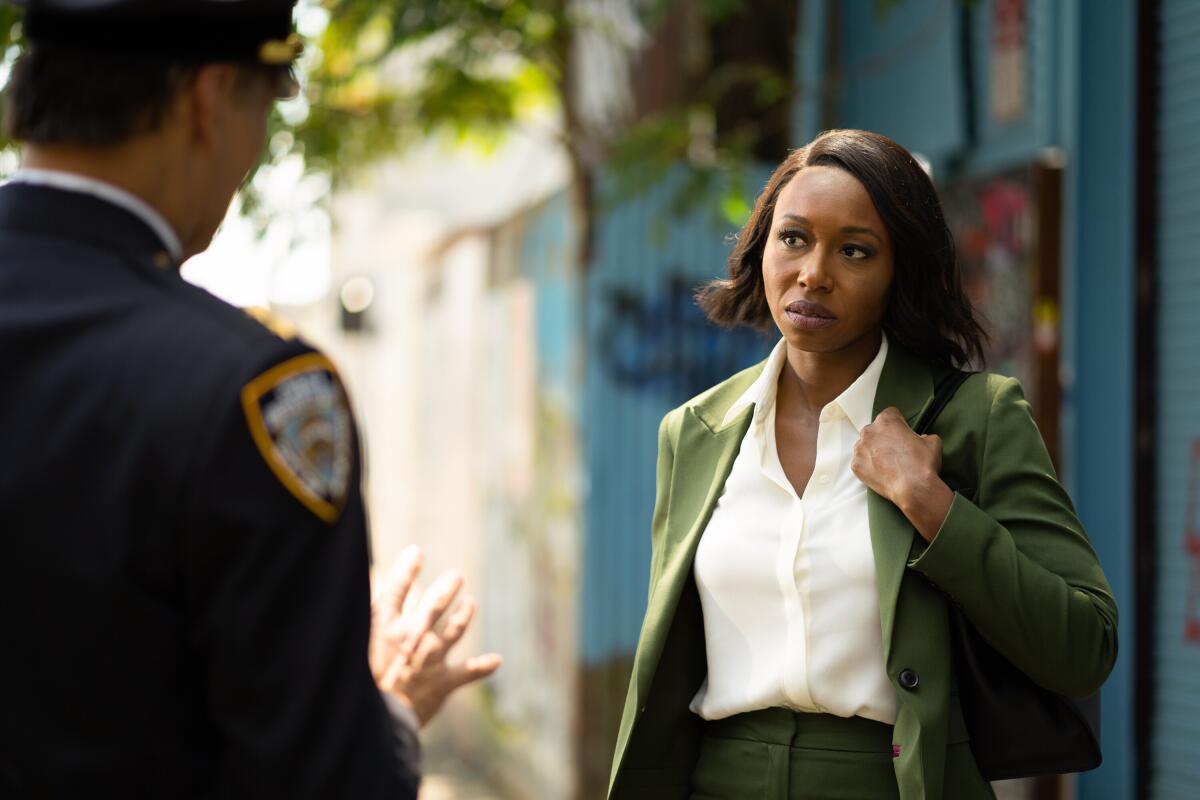
“I want to have community policing mean something,” Regina Haywood, played by Amanda Warren, says in the pilot episode of “East New York.”
In CBS’ newest police procedural, Haywood is the new top cop in one of New York’s toughest precincts and she’s looking to usher in serious change, whether it’s sending a cop to live in the local housing projects or cracking down on officers who deny suspects their lawyers and are willing to lie on the stand.
“We had a desire to see where the cop show can live in the post-George Floyd era,” says co-creator William Finkelstein. “You can’t ignore the moment in time.”
An old hand at broadcast network cop shows including “Law & Order” and “NYPD Blue,” Finkelstein, 70, was partnered by Warner Bros. Television with Mike Flynn, 40, who has worked on cable series like “Queen Sugar” and “Power Book III: Raising Kanan.” Each had been developing their own new series.
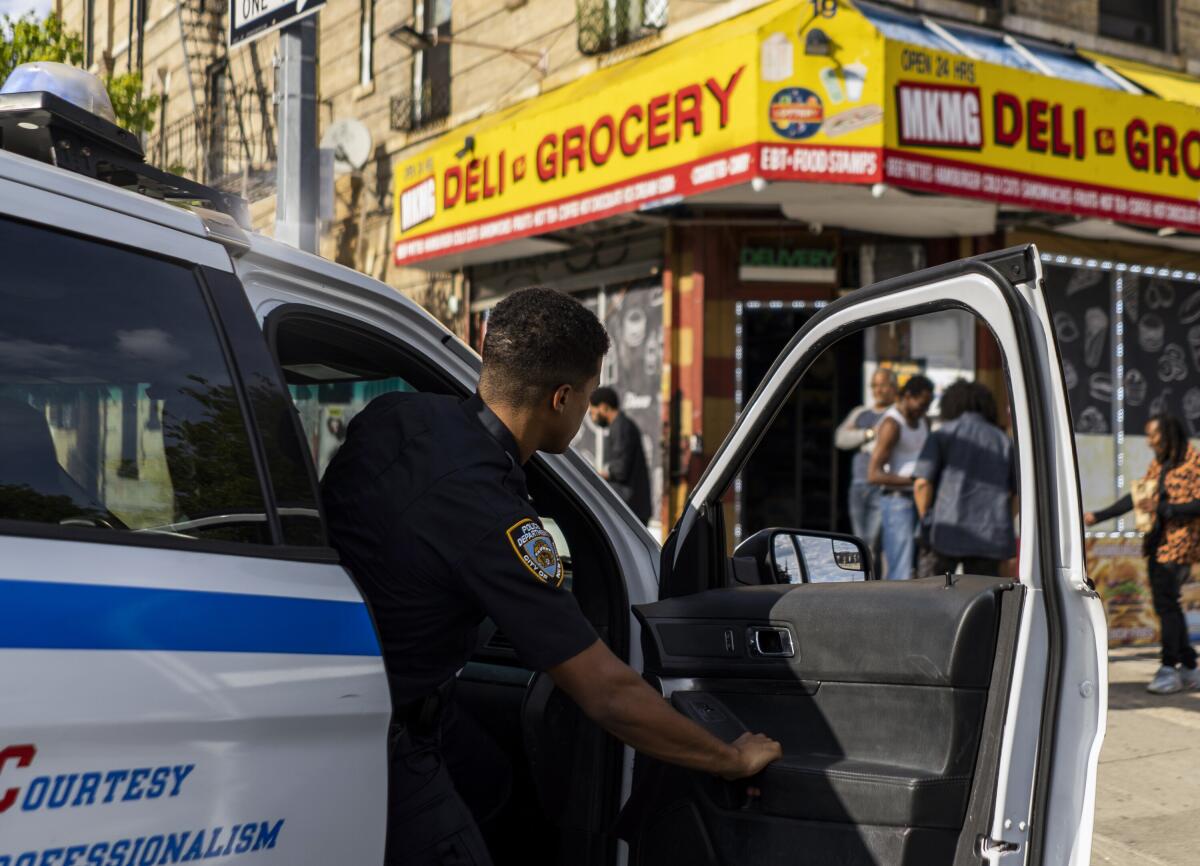
“We want to show the relationship between cops and the community and how to bridge that gap with a new commander coming in with unconventional methods,” Flynn says. (The show’s other stars include Jimmy Smits as the Brooklyn borough commander, Richard Kind as Haywood’s second-in-command and Ruben Santiago-Hudson as an opinionated veteran officer.)
“There is a lot of conflict between the way the public perceives cops and the way the cops perceive themselves and the public,” says Finkelstein. The showrunners said they read up on police policy and reform and talked to officers in search of an air of authenticity, but declined to comment when asked specifically what attempts were made to consult police reform advocates for the series.
Indeed, beyond whether the show feels authentic to police officers — and, of course, entertaining to viewers — lies the question of whether it does more than pay lip service to ideas that have been hotly debated over the last two years. Interviews with half a dozen advocates and academics who watched the pilot produced decidedly mixed reviews.
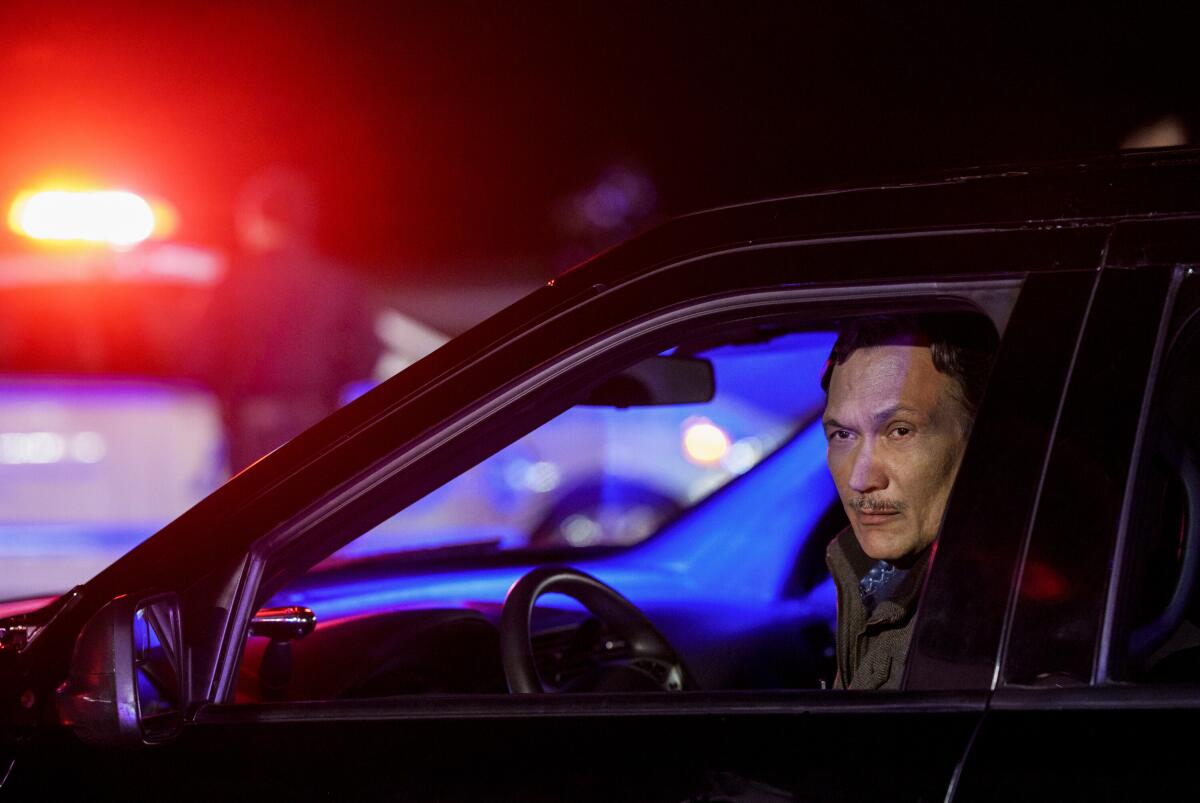
Police reform experts take pop culture seriously, says Jullian Harris-Calvin, director of Greater Justice New York at the Vera Institute of Justice. “All these years of cop dramas have shaped the public image of policing and criminal justice.”
Greg Smithsimon, a Brooklyn College sociology professor who studies policing issues, acknowledged that “you don’t make a network show for a bunch of activists — it needs to be a broader show. But you still need to talk about structural issues with policing. ‘The Wire’ looked at the whole institution, and I think a broadcast network today could do some of what ‘The Wire’ did 20 years ago without shocking anybody.”
Critics say the popular TV shows of “Law & Order,” “Chicago PD” and “FBI” creator Dick Wolf create harmful misperceptions of the criminal justice system.
‘Their hands are tied’
A series that shows police moving beyond chases, shootouts and DNA testing to more progressive approaches could have an impact on public perception, according to Daniel Harawa, who teaches law at Washington University in St. Louis and studies race and the criminal legal system.
“We need to open folks’ imagination. If they watch a prime-time show and say, ‘Oh, I didn’t know a police officer could do that,’ then ‘East New York’ could really make a difference,” he says. “But while things could change over the course of the season, it doesn’t feel now like it will break meaningfully from the genre.”
Harawa and Smithsimon point to the opening scene in the pilot, in which Haywood races into a wild and violent street shootout, as emblematic of “East New York’s” problems. “That plays into all the worst impulses about violent crime and the fears that go along with it,” Harawa says.
“Police reform means reforming the police show too,” Smithsimon adds. “It feels like they want to do something different but their hands are tied.”
Even the question of whether “East New York’s” reformist premise is laudable came in for debate. A series that tries “to make us feel good about the police” can do more harm to the cause of reform than good, says Harawa. It also has historical antecedents.
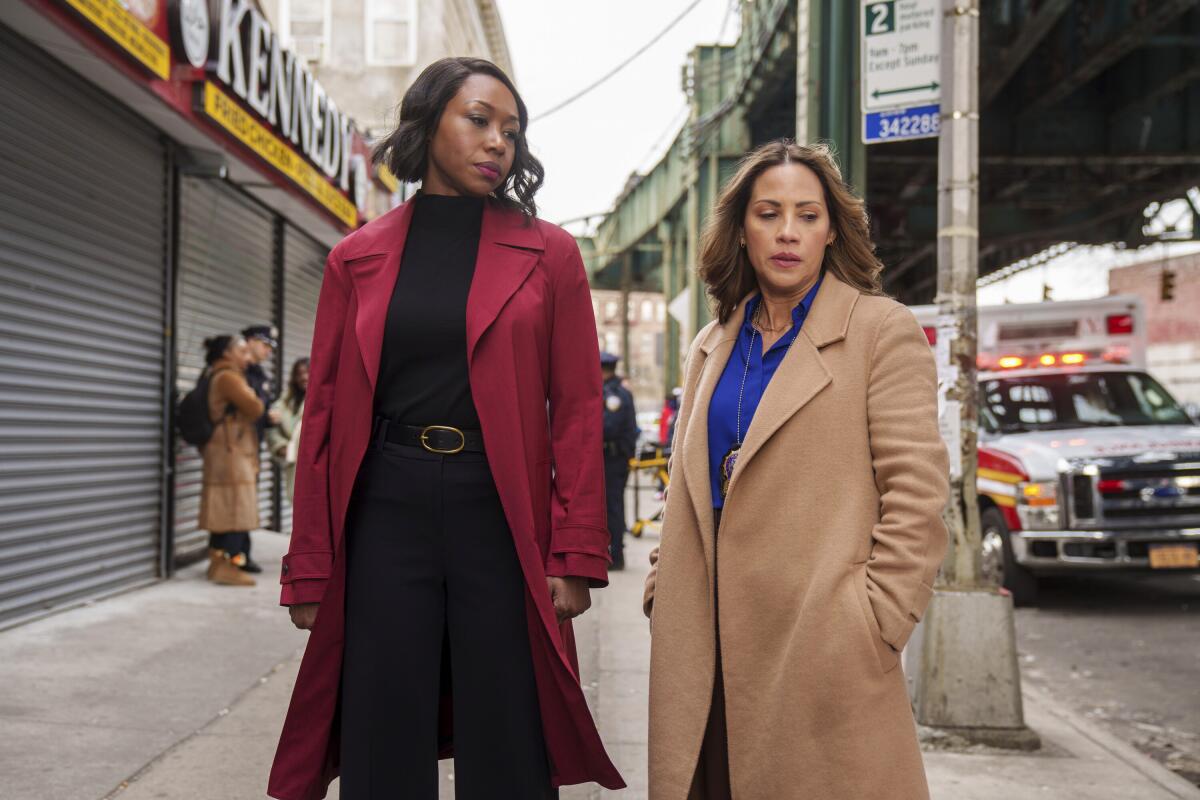
“There is a long history of police programs playing a role in re-legitimating policing in a time of crisis,” Alex Vitale, coordinator of the Policing and Social Justice Project at Brooklyn College, wrote in an email, likening the new series’ emphasis on community policing to the days when “‘Adam-12’ was co-produced by the LAPD in the wake of the Watts riots to instill the idea that the LAPD was now a professional and nonracist entity.”
Similarly, Harris-Calvin sees the show as using progressive ideas primarily as a narrative conceit. “It feels like they took some newfangled thing from the headlines and dropped it into the plot to make it feel relevant,” she says. “It doesn’t seem like a good-faith effort. The show fails to challenge our notions of how policing can successfully be different.” (The showrunners declined to comment on criticism of the motives behind the series.)
Others leavened their criticism of the series’ lack of realism and nuance with acknowledgement of the incremental improvements “East New York” does make to the genre’s traditional depictions of policing.
From ‘Law & Order’ to ‘Cops,’ we’re at a moment of reckoning for the depiction of police on TV. But change will require us to stop lionizing rogues and scamps.
As Brandon Hasbrouck, a law professor at Washington and Lee University and a columnist at the Boston Globe’s the Emancipator, wrote in an email, the show “falls right into the trap of ‘community policing’ as a synonym for ‘broken windows’ policing.”
But, he says, the resistance Haywood encounters among her charges is a bright spot. “What the show gets the most right is the police officers’ response to reform,” he wrote. “We don’t see a single beat cop embrace Haywood’s ideas wholeheartedly and with clear understanding. We see a range from naive support with unexamined privilege to cynicism to outright hostility.”
“They’re trying to do the right thing and there are kernels of good ideas, but they keep taking shortcuts,” says Jorja Leap, executive director of the UCLA Social Justice Research Partnership, asserting that both police officers and Black Lives Matter activists will see the script’s contrivances and think, “‘This does not reflect reality.’”
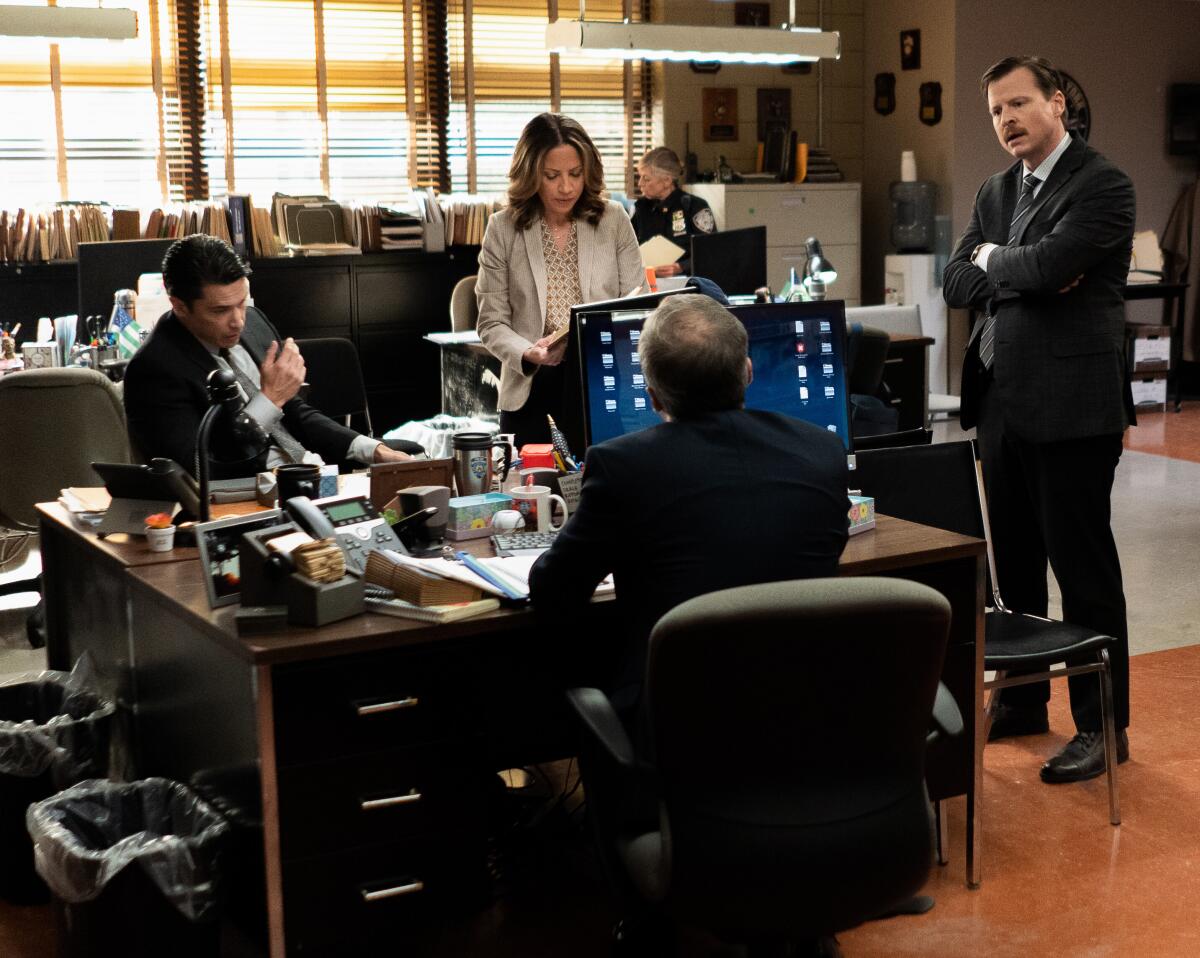
After all, communities themselves have been drivers of genuine change in police practices, even though the show offers a top-down, hero-driven approach. “Haywood is the outsider coming in waving her hand around trying to fix the problem,” Harawa says.
In reality, the greatest obstacle to change, Harawa says, is the “virulent opposition” of police unions. “I hope the series doesn’t just show that Haywood can come in and clean up the place. I don’t know how you tell the story without the union being a central figure.”
Exploring the role of unions doesn’t necessarily mean stripping away nuance either, Harris-Calvin notes: “There are the union bosses and then the rank-and-file and some who want to move forward. Police officers are not a monolithic group.”
The complete guide to home viewing
Get Screen Gab for everything about the TV shows and streaming movies everyone’s talking about.
You may occasionally receive promotional content from the Los Angeles Times.
‘A tough ask’
Leap says the creators have the makings of a potential game changer — “but they’ve got to put some meat on the bones.” She wants “texture” and realism without shortcuts, including officers who embrace reform and community members who are pro-police. Leap, who has worked in Watts for 40 years, says the community in “East New York” is unconvincingly presented as exclusively anti-cop. “It’s not that everyone doesn’t want cops — they don’t want bad cops,” she says, suggesting that the series show the officers slowly trying to build relationships.
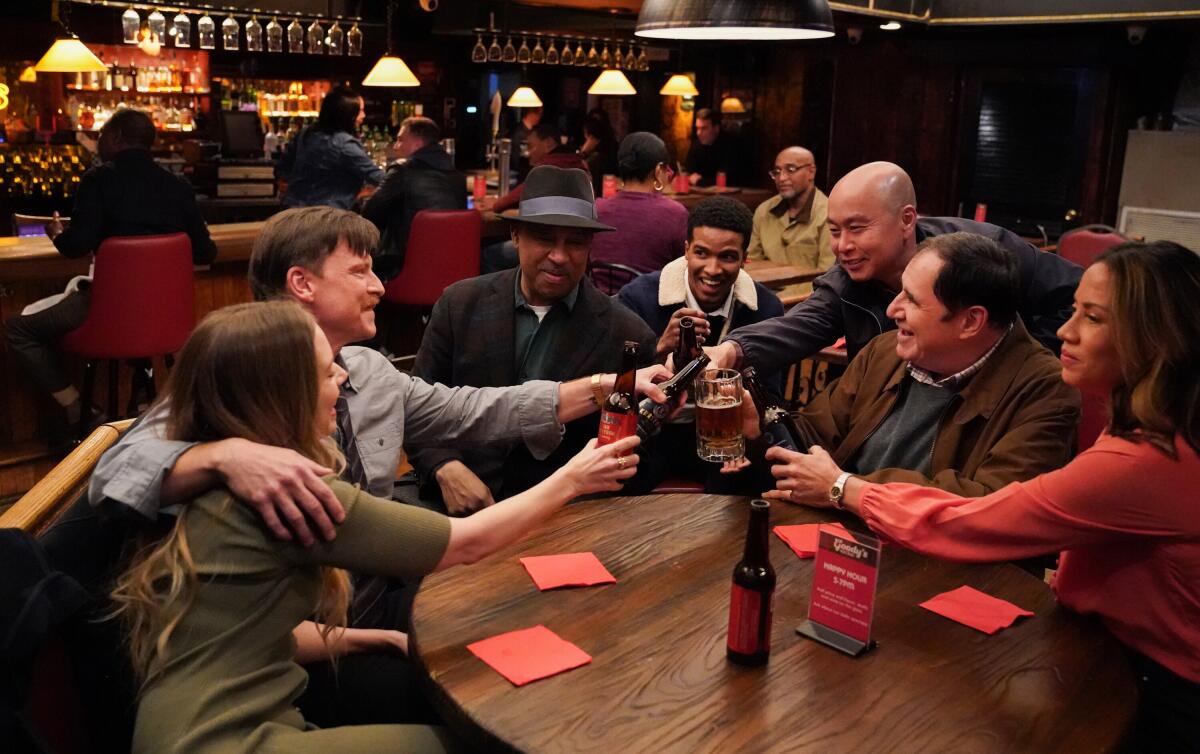
Harris-Calvin would start with the basics. “The show must at least explicitly define what community policing is and have their characters take it seriously and show the challenges.” And she believes it can be done without lecturing audiences: “There can be a sophisticated discussion without making older audiences feel like they’re having a finger wagged at them and told they’re not progressive enough.”
To succeed, Smithsimon says the show will need to address other issues, like the way police are now expected to interact with unhoused people and those with mental health problems. “This is changing their job,” he says.
He hopes the show goes even further in its ambitions. “They could tell the George Floyd story from the inside — what it’s like to be a cop in a precinct where something like that happens, especially where everyone in the precinct knew before something went wrong that the officer is a hothead.”
Hasbrouck agrees, saying that to stimulate serious public conversation “East New York” needs to explore its tragic dimensions, looking beyond the “entirely virtuous” Haywood to the system as a whole. “She gets the bad guy, supports defendants’ constitutional rights and wants her officers to focus on physical harms to the community rather than law and order offenses,” he says, adding that a more honest approach — like that of “The Wire,” in which police resistance and political headwinds cut down well-intentioned reform efforts — is “a tough ask on network television.”
“Though not impossible.”
‘East New York’
Where: CBS
When: Sunday, 9 p.m.
Rating: TV-PG (may be unsuitable for young children)
More to Read
The complete guide to home viewing
Get Screen Gab for everything about the TV shows and streaming movies everyone’s talking about.
You may occasionally receive promotional content from the Los Angeles Times.
